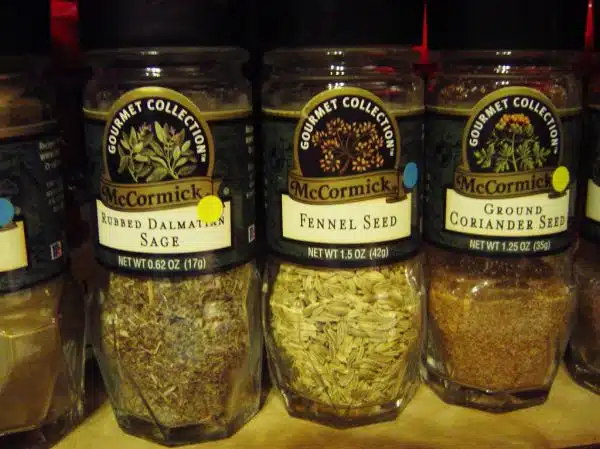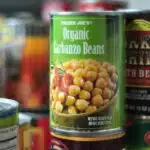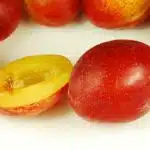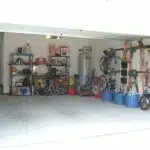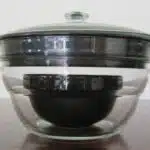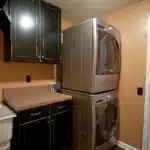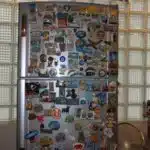Organizing a pantry can be a daunting task, but it is an essential step towards keeping your kitchen orderly and efficient. A well-organized pantry not only saves time and money, but also ensures that food items are easily accessible when needed. With the right approach and tools, anyone can organize their pantry like a pro.
The key to organizing a pantry is to have a plan before you start. This involves assessing the space available, categorizing the items you have, and choosing appropriate storage solutions. Additionally, having a clear understanding of how often you use certain items will help you determine where they should be placed within your pantry. In this article, we will discuss some tips and tricks to help you transform your cluttered pantry into an organized haven for all your food storage needs.
Benefits Of A Well-Organized Pantry
A well-organized pantry is an essential part of any functional kitchen. The importance of having a pantry that is organized cannot be overstated, as it saves you time and money in the long run. A well-organized pantry ensures that you can easily find ingredients when you need them, and it also helps to reduce food waste by making it easier to keep track of what you have on hand.
Efficiency is another critical benefit of a well-organized pantry. When your pantry is organized, meal preparation becomes more manageable because everything is in its place and easy to find. This makes cooking less stressful and more enjoyable. You can quickly grab ingredients without having to search through cluttered shelves or dig through piles of boxes and bags.
In addition to these practical benefits, a well-organized pantry can also contribute to your overall sense of wellbeing. It can help reduce stress levels by eliminating clutter and creating a more peaceful environment. By taking the time to organize your pantry, you are investing in yourself and your family’s health and happiness.
With these benefits in mind, let’s move on to assessing your pantry space so that we can start organizing it efficiently.
Assessing Your Pantry Space
Accurately measuring the amount of storage space available in the pantry is essential to effectively organizing it. Identifying the types of items that need to be stored in the pantry can help to determine the most efficient way to arrange the available space. The layout of the pantry should be tailored to the individual’s needs, taking into account the frequency of use for different items as well as their size and bulk. To maximize efficiency, regular assessments of the pantry’s storage needs should be conducted to ensure space is utilized to its fullest potential.
Measuring Storage Space
Ensuring that your pantry is organized requires a thorough assessment of the available storage space. Measuring accuracy is key to determining the exact dimensions of your pantry shelves and cabinets. This is vital in selecting containers and baskets that fit perfectly into the available space while maximizing storage capacity.
Optimal spacing is also essential in organizing your pantry. It’s important to leave enough room between items to allow easy access and visibility. A well-spaced pantry ensures that you can easily find what you need without having to move other items out of the way. Measuring the depth, height, and width of your shelves will help you determine exactly how much space you have to work with.
By measuring storage space accurately and optimizing spacing, you can create an organized and functional pantry that meets all your needs. Ensuring that everything has its place not only makes it easier to locate items but also helps maintain orderliness in your kitchen. When planning out your pantry organization strategy, be sure to keep these crucial factors in mind for a successful outcome.
Identifying Storage Needs
After assessing the pantry layout and measuring the available storage space, it’s time to identify your storage needs. This involves taking stock of what you have in your pantry and determining how much storage space each item requires. It’s essential to note that everybody’s storage needs are unique, so what works for one person may not necessarily work for another.
The goal of identifying your storage needs is to ensure that everything in your pantry has a designated home. For instance, tall items such as cereal boxes need ample vertical space, while small items like spices require less space but must be easily accessible. Keeping this in mind will help you select appropriate containers and baskets that optimize available space while accommodating your specific storage requirements.
By identifying your storage needs, you can create a customized system that caters to your specific lifestyle and preferences. Take inventory of what you have, consider how frequently you use each item, and plan accordingly. A well-organized pantry not only makes meal prep more manageable but also saves time and reduces clutter in the kitchen.
Categorizing Your Pantry Items
Having assessed your pantry space, it’s time to categorize your pantry items. This is the next crucial step in organizing your pantry and ensuring that you can find everything you need quickly and efficiently. One way to do this is by using a color coding system. This means grouping similar items together and assigning them a color label. For example, all baking ingredients could be labeled with a blue sticker, while all canned goods are labeled with green.
Another method for organizing your pantry is through alphabetical arrangement. This involves sorting your pantry items according to their names or categories in alphabetical order. You can then create labels for each item or category and place them in alphabetical order on the shelf. This system makes it easy to locate any item quickly, even if you don’t know where it’s stored.
Ultimately, choosing the right storage solutions for your pantry will depend on the size of your space and the types of items you need to store. Some popular options include wire shelving units, clear plastic containers, baskets, and lazy susans. Whatever storage solution you choose, ensure that it maximizes the available space and allows for easy access to all items in your pantry. By following these steps of categorizing and utilizing appropriate storage solutions, you can transform a cluttered mess into an organized and functional space that meets all of your needs efficiently.
Choosing The Right Storage Solutions
One of the most important aspects of a well-organized pantry is choosing the right storage solutions. There are many options available, from clear containers to custom shelves and even DIY solutions. Professional organizers recommend starting with clear containers as they allow you to easily see what is inside without having to open each container individually. This not only saves time but also helps prevent food waste as you can quickly identify items that need to be used up before they expire.
Custom shelves are another great option for organizing your pantry. These can be tailored specifically to your needs and can make use of every inch of space in your pantry. They can also help keep items organized by providing designated areas for specific categories such as baking supplies or snacks. If you have a smaller pantry, DIY solutions such as hanging baskets or repurposed shoe organizers can be a great way to maximize space while still keeping everything tidy.
When it comes to choosing the right storage solutions for your pantry, it is important to consider your individual needs and budget. Professional organizers suggest taking an inventory of what you have and then deciding on the best storage options based on that information. While it may seem overwhelming at first, investing in quality storage solutions will ultimately save you time, money, and frustration in the long run.
Now that you have chosen the right storage solutions for your pantry, it’s time to move onto the next step: labeling your pantry items. By clearly labeling everything in your pantry, you’ll know exactly where everything belongs and be able to quickly find what you need when preparing meals or making grocery lists. In the next section, we’ll discuss some tips and tricks for effective labeling techniques that will take your organization skills to the next level.
Labeling Your Pantry Items
Just like a puzzle, organizing your pantry requires careful consideration of all the pieces and how they fit together. In the previous section, we discussed the importance of choosing the right storage solutions to maximize space and create a functional layout. Now, it’s time to complete the puzzle by labeling your pantry items.
Creative labeling ideas can transform a cluttered pantry into an organized oasis. Labels serve as visual cues that help you quickly find what you need, reducing stress and saving time. Some creative labeling ideas include using chalkboard or dry-erase labels, creating custom labels with colorful paper and stickers, or using clear containers with printed labels inside. When choosing labels, consider the materials they will be applied to – some adhesives may damage certain surfaces.
Labeling tools and materials are readily available at most office supply stores or online retailers. Some popular options include label makers, which allow you to print custom labels on demand, or pre-printed label sheets that can be handwritten or typed on. Don’t forget to consider font size and clarity when creating your labels – they should be easy to read from a distance.
Grouping similar items together is another crucial step in organizing your pantry. By keeping like items together – such as baking supplies or canned goods – you’ll be able to quickly locate what you need without sifting through unrelated items. This also helps prevent overbuying because you’ll know exactly what you have on hand before heading to the store. With these tips in mind, let’s move on to our next section about grouping similar items together for maximum efficiency.
Grouping Similar Items Together
Sorting pantry items is an essential step in organizing a pantry. Grouping similar items together will make it easier to locate them when needed and help avoid clutter. This section will provide some pantry organization tips on how to group similar items together.
The first step is to remove everything from the pantry and categorize each item into groups such as baking goods, canned foods, snacks, cereals, etc. Once each item has been categorized, it’s time to start grouping similar items together. For instance, all types of pasta should be placed in one area while all types of canned beans should be placed in another area.
To further organize your pantry, consider using containers or baskets for each group of items. This not only makes your pantry look tidy but also makes it easy to find what you’re looking for. Be sure to label each container or basket with its contents so that you don’t have to guess what’s inside.
In summary, sorting your pantry into groups of similar items is a great way to organize it and keep things neat and tidy. By using containers or baskets for each group of items and labeling them accordingly, you’ll make it easy for yourself to find what you need quickly and efficiently.
Now that you’ve sorted your pantry items into groups of similar items, the next step is storing bulk items.
Storing Bulk Items
Bulk Item Storage
Organizing a pantry can be a daunting task, especially when it comes to storing bulk items such as grains, flours, and sugar. However, with creative solutions and some planning, bulk item storage can be both functional and aesthetically pleasing.
One effective way to store bulk items is by using clear containers with labels. This not only helps to keep the items fresh but also makes it easier to identify what you have on hand. It is important to choose containers that are airtight and made of food-grade materials. Using clear containers also allows for easy visibility of the contents inside.
Another option for bulk item storage is utilizing baskets or bins. These can be placed on shelves or in drawers, providing an easy way to separate different types of items and prevent them from spilling over onto each other. Labeling the baskets or bins will help with organization and make finding specific items more efficient. Additionally, baskets with handles allow for easy access and transportation when needed.
| Container Type | Pros | Cons |
|---|---|---|
| Glass Jars | Airtight; preserves freshness; reusable | Heavy; breakable |
| Plastic Containers | Lightweight; shatterproof; inexpensive | May not be airtight; may hold odors |
| Metal Containers | Durable; pest-resistant; stackable | Not see-through; may rust |
In conclusion, there are various ways to effectively store bulk items in your pantry using creative solutions such as clear containers with labels or baskets/bins. When choosing storage options, it is important to consider functionality as well as aesthetics in order to create an organized space that is both efficient and visually appealing. Next, we will explore utilizing vertical space in your pantry for even more storage possibilities.
Utilizing Vertical Space
Vertical storage ideas are essential in maximizing pantry space. By using the vertical space, you can create additional storage without taking up any floor or shelf space. One of the best vertical storage ideas is to add shelves on the inside of the doors. This is a great place to store smaller items like spices, condiments, and snacks.
Another way to use vertical space is by using tension rods to create additional shelving in your pantry. Tension rods are easy to install and can hold lightweight items like baking sheets and cutting boards. You can also use a wire basket system that hangs from the ceiling of your pantry, which is perfect for storing bulky items such as potatoes and onions.
If you have limited floor space, consider investing in a rolling cart that fits nicely into narrow spaces between your pantry shelves. This type of cart provides extra storage for canned goods, boxed foods, or kitchen appliances that you don’t use regularly.
To summarize, utilizing vertical space is key in maximizing pantry organization. Here are five bullet point tips for utilizing vertical storage ideas:
- Add shelves on the inside of doors
- Use tension rods for additional shelving
- Install a wire basket system that hangs from the ceiling
- Invest in a rolling cart for limited floor space
- Label everything! This will help you stay organized and make finding what you need easier.
Incorporating these tips into your pantry organization will help you make the most out of your available space. Next up: maximizing shelf space!
Maximizing Shelf Space
Your pantry is like a library of food, with each shelf holding different ingredients waiting to be used in your next culinary creation. To make the most out of your pantry’s shelf space, it’s important to get creative with your organization. One way to maximize space is by using corner shelves that often go unused. By utilizing these corners, you can create additional storage areas for cans, jars, and other small items.
Another idea for maximizing shelf space is to use risers that elevate items off the ground and create more room underneath. This strategy works especially well for canned goods or boxed items that can stack on top of each other. By using risers, you can create two levels on one shelf and double the amount of storage space available.
For those who have limited shelf space, consider adding hanging organizers to the inside of your pantry door. These organizers are perfect for storing snacks or spices in small bags or containers that may clutter up other areas of your pantry. By incorporating these creative ideas into your pantry organization system, you’ll be able to maximize every inch of available space and keep all your favorite ingredients within easy reach.
Transition: Now that we’ve covered some effective ways to maximize your pantry’s shelf space, let’s move onto another essential aspect of pantry organization: storing spices and herbs.
Storing Spices And Herbs
To further maximize your pantry’s shelf space, it is important to organize your spices and herbs in a way that is both functional and visually appealing. Organizing spices involves keeping them in a cool, dry place away from direct sunlight. Storing herbs, on the other hand, requires a bit more attention as they are more delicate and prone to losing their flavor over time.
Here are some tips for organizing your spices and storing your herbs:
- Use clear jars or containers to easily identify spices.
- Label each jar or container with the name of the spice.
- Arrange spices alphabetically or by frequency of use.
- Store herbs in an airtight container in a dark, cool place such as a drawer or cabinet.
By following these guidelines, you can easily locate the spice you need without having to rummage through cluttered shelves or drawers. Storing herbs properly ensures that they retain their freshness for longer periods of time, which ultimately saves you money on wasted ingredients.
Keeping your pantry clean and tidy is essential not only for aesthetic reasons but also for food safety purposes. It is important to regularly inspect items in your pantry for expiration dates and toss out anything that has gone bad. Wipe down shelving and containers with warm soapy water every few months to prevent the buildup of dirt and grime. By taking these small steps, you can ensure that your pantry remains organized, functional, and safe for consumption.
Keeping Your Pantry Clean And Tidy
Maintaining a tidy and clean pantry is essential to keep your food fresh and free of contamination. By following some simple tips and tricks, you can ensure that your pantry stays organized, easy to navigate, and visually appealing. Proper maintenance will also save you time and money as it will help you avoid buying unnecessary items or having to throw away expired products.
To begin with, start by decluttering your pantry regularly. Get rid of any expired or stale products, donate items that are still good but haven’t been used in a while, and throw away anything that has gone bad. This will create more space for new items while keeping the pantry orderly. Additionally, grouping similar products together using techniques such as labeling or color-coding can make it easier to locate specific items quickly.
In terms of cleanliness, wipe down the shelves regularly using a damp cloth or disinfectant spray to remove any dust or spills. Be sure to check for any signs of pests such as ants or rodents as they can contaminate your food supply. Lastly, consider investing in storage containers or jars for staples like rice, pasta, and flour. These containers not only keep the ingredients fresher for longer but also add aesthetic appeal to your pantry’s orderliness.
Transition into subsequent section on rotating pantry items: “One way to ensure that your pantry stays organized is by rotating your food supply regularly.”
Rotating Your Pantry Items
As you stand in front of your newly organized pantry, take a moment to appreciate the hard work you’ve put into creating a functional space. But, organizing your pantry is only half the battle. The other half is maintaining it, and rotating your pantry items is an essential part of that process.
Benefits of rotation are many. Not only does it ensure that you’re using up older items before they expire, but it also helps you keep track of what you have in stock and what needs to be replenished. Additionally, by using older items first, you’re reducing food waste and saving money by not having to throw out expired products.
Tips for expiration dates are simple: always check them before adding new items to your pantry, and make sure to place newer items behind older ones. This way, when you grab an item from the front, you’ll be using up the oldest item first. Use labels or marker pens to write the purchase date on each item as soon as you bring it home from the store. This will help you keep track of how long each item has been in your pantry.
Now that you know the importance of rotating your pantry items let’s move on to creating meal prep zones. By doing so, meal preparation becomes much more manageable since all necessary ingredients are within reach.
Creating Meal Prep Zones
After properly rotating your pantry items, the next step is to create meal prep zones. Meal prep is an excellent way to save time, money, and energy during busy weekdays. Having a designated area for meal preparation makes it easier to find everything you need quickly. To create a meal preparation zone in your pantry, clear out space on a shelf or two and gather all of the necessary tools such as cutting boards, knives, measuring cups and spoons.
Meal prep tips can help you make the most of your pantry organization efforts. Consider using stackable containers for ingredients that will be used together frequently, such as rice and beans or flour and sugar. Label each container with its contents so that you can easily find what you need when whipping up meals in the kitchen. You can also use labels on baskets or bins where you store snacks or breakfast items to make mornings run smoother.
Organization hacks like using baskets and bins for organization are essential when it comes to pantry organization. Use clear plastic containers with lids so that you can see what’s inside without having to open them every time. Group items by category such as canned goods, pasta, sauces or baking supplies so that everything has its own place. Baskets are also great for storing small items like spices or seasoning packets which tend to get lost in larger spaces. Using these simple tips will help keep your pantry organized and functional for all your cooking needs.
Transition: Using baskets and bins for organization is another effective way to keep your pantry neat and tidy.
Using Baskets And Bins For Organization
Baskets and bins are essential tools for organizing your pantry. They are versatile, customizable, and functional. When choosing baskets and bins for your pantry, you need to consider their purpose, durability, and aesthetic appeal. Decorative vs practical baskets are a common dilemma among homeowners. Decorative baskets come in various shapes, colors, and materials that can add a touch of elegance to your pantry. However, they tend to be more expensive and less durable than practical baskets.
Using clear vs solid bins is another consideration when organizing your pantry. Clear bins allow you to see the contents without opening them, making it easier to find what you need quickly. They are also stackable and space-saving. On the other hand, solid bins provide more privacy for items that you don’t want to display or those that may not look attractive in clear containers.
Here are four tips for using baskets and bins effectively in your pantry:
- Use labeled baskets or bins for grouping similar items together.
- Use shallow baskets or trays for smaller items such as snacks or spice packets.
- Use deep baskets or bins for larger items such as cereal boxes or bags of flour.
- Use stackable bins to maximize vertical space.
By using these tips, you can create a well-organized pantry that is easy to navigate and maintain. In the next section, we will discuss how to maintain an organized pantry by implementing simple habits into your daily routine.
Maintaining Your Organized Pantry
Using baskets and bins for organization is a great way to keep your pantry tidy. However, organizing your pantry is only half the battle. To maintain an organized pantry, regular maintenance is key. Regular maintenance ensures that you are preventing clutter from building up in your pantry.
One way to maintain an organized pantry is to conduct weekly check-ins. During these check-ins, take a few moments to assess the state of your pantry. If you notice items that are out of place or expired, remove them immediately. This will help prevent clutter from accumulating and keep your pantry looking neat and tidy.
Another tip for maintaining an organized pantry is to practice the “one in, one out” rule. This means that for every item you add to your pantry, you should remove one item that you no longer need or use. This will help prevent overcrowding and ensure that everything in your pantry has a purpose. By practicing regular maintenance and preventing clutter buildup, you can enjoy a well-organized and functional pantry at all times.
Conclusion
A well-organized pantry can save time, money, and reduce stress when cooking. Assessing your pantry space, categorizing items, choosing the right storage solutions, labeling items, rotating them regularly, creating meal prep zones, and using baskets and bins for organization are all key steps towards a functional pantry. To maintain an organized pantry, it is important to consistently review and declutter the space.
One idiom that applies to organizing a pantry is “a place for everything and everything in its place.” This means that each item should have a designated spot in the pantry so that it is easy to find and put away. By maintaining order in the pantry through regular maintenance and organization, you can minimize food waste and prepare meals with ease.
As a professional organizer, my goal is to help clients create functional spaces that fit their unique needs. By following these steps for organizing a pantry, you can create a system that works for you. Remember to keep like items together, use clear containers to easily see what’s inside, rotate food regularly to avoid expiration or spoilage, create designated zones for meal prep or snacks, and use baskets or bins for additional storage. With these tips in mind and a commitment to regular maintenance of your pantry space, you can enjoy the benefits of an organized kitchen.
Image Credits
- “-Pantry organization project” by vanherdehaage (featured)

